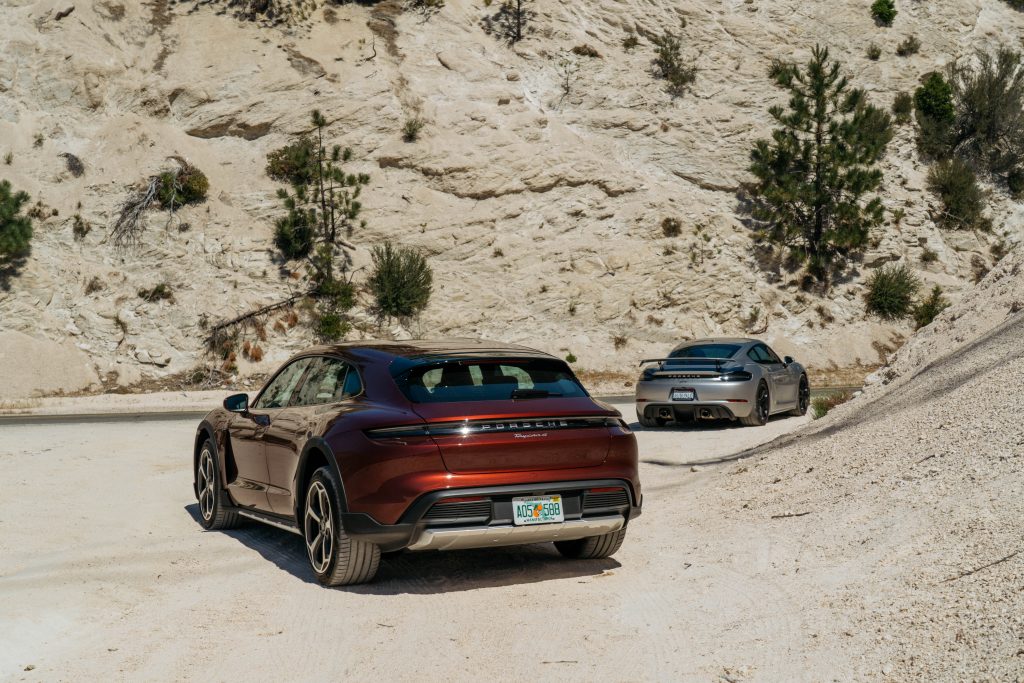Torching Arctic Ice in Porsche’s First All-Electric Car
A vehicle that dominates what would otherwise be an unforgiving environment

“The amount of torque in this car will simply obliterate the ice,” an instructor at the Porsche Ice Experience tells us. “So please try not to stomp on the accelerator.”
We’re in the Taycan Turbo S, Porsche’s first ever all-electric vehicle. This is a revolution for the Stuttgart-based automaker—a four-door sedan using two electric motors that individually power the front and rear axles. If maximum battery power is utilized, it gets up to 750 horsepower.
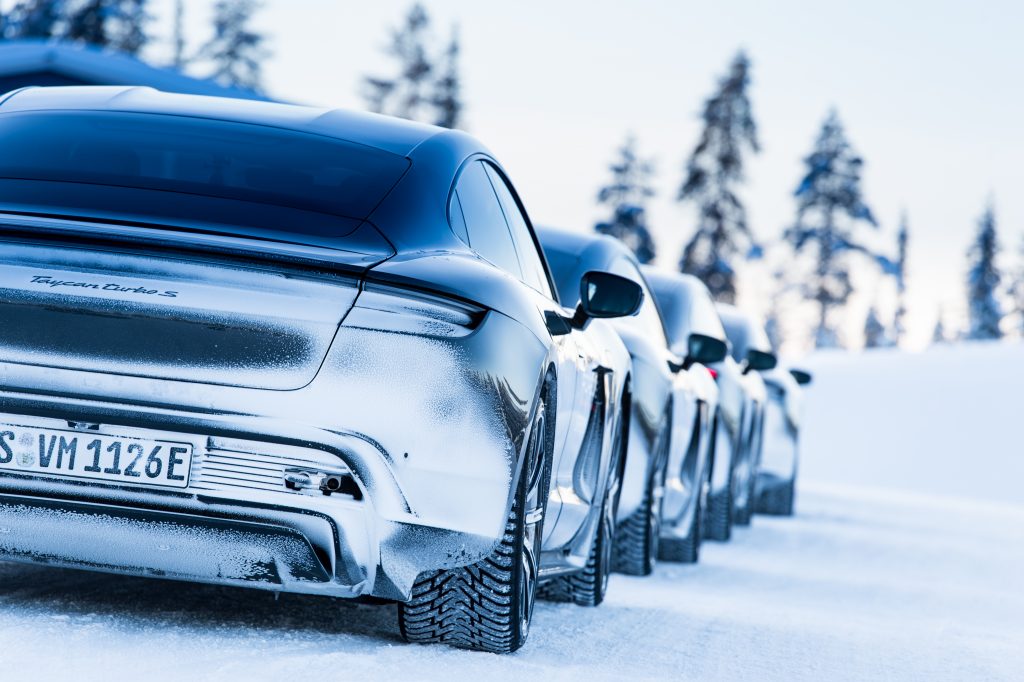
More crucial is the Taycan’s torque rating (a number that reflects rotational force): 774 pound-feet available from the moment you tap the go pedal (remarkable in comparison to Tesla’s Model 3, which sports 471), allowing it to blast to 60 miles per hour in 2.6 seconds. But that’s on dry pavement, and we are decidedly not on asphalt. Rather, we are some 100 miles north of the Arctic Circle, in Finland’s Lapland, driving on an expanse of snow-coated ice.

This isn’t the place one might expect to try out a fully-electric vehicle but Porsche wants to show the Taycan’s performance and hardiness, even in sub-zero temperatures. Hence the company has included the Taycan in the vehicle lineup on its ice-driving campus in Finland, part of the 7,290€ Ice Force Pro program offered to customers. Over three days, participants navigate around ice-covered courses in 911 4Ss, 911 GT3s, and a Cayman-based race car.
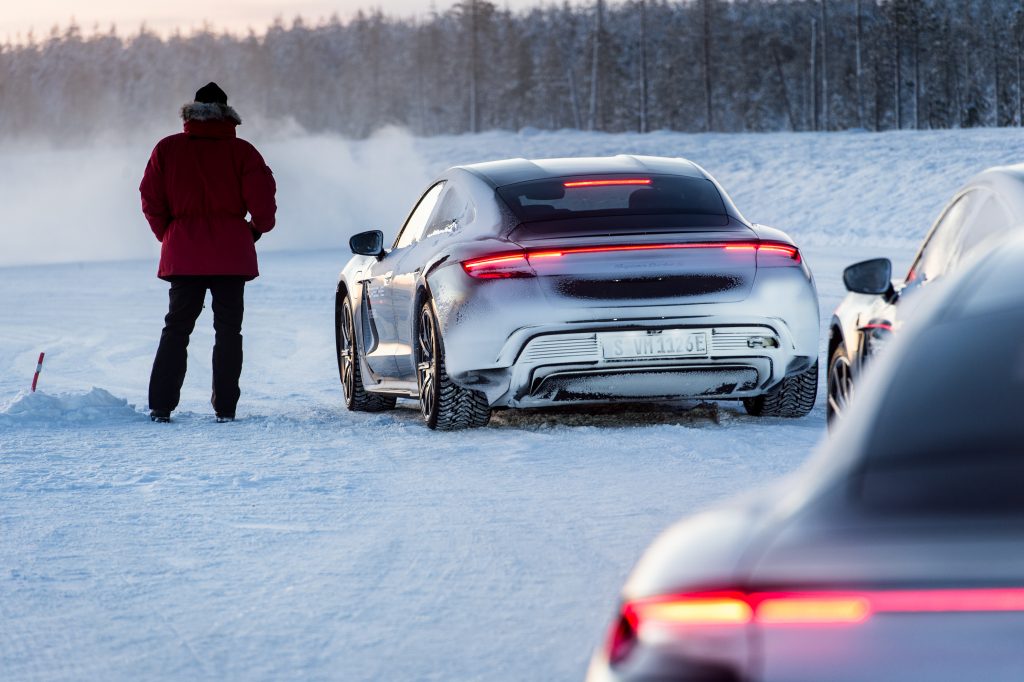
Even among that elite group, the Taycan stands out. The Turbo S is the most powerful and expensive of the three Taycan models going on sale, using a 93.4-kWh battery, and with a starting price around $187,000. The EPA has given the Turbo S a rather anemic range of 192 miles—but real-world tests by a number of our colleagues have shown that it can easily be driven beyond that.
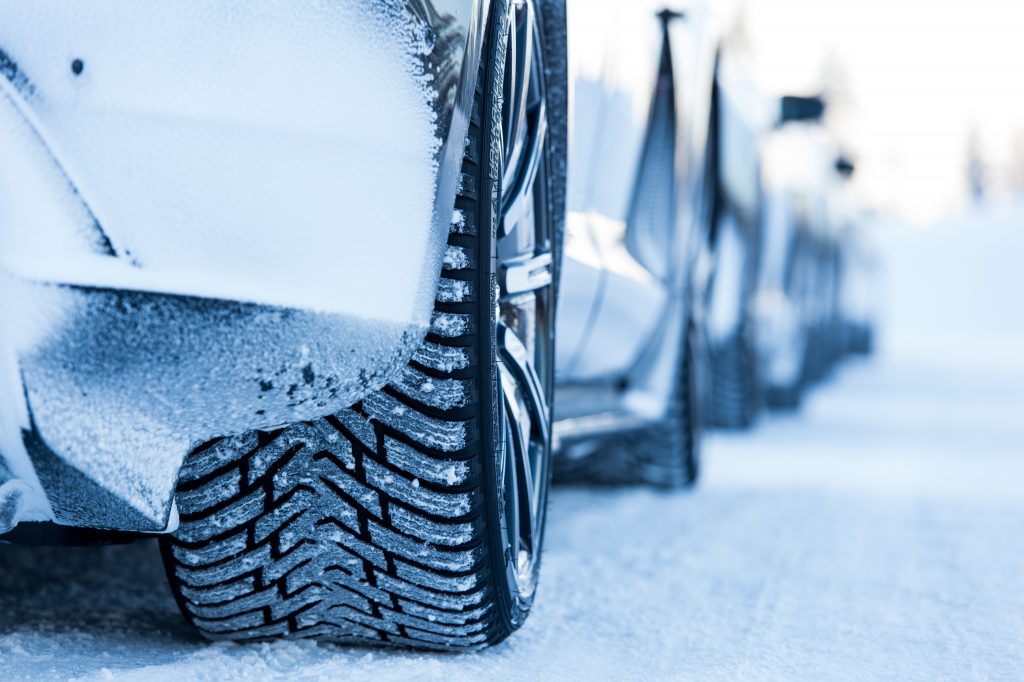
An unfussy design with a 911-inspired stance and front fenders, it comfortably seats four adults thanks to its 16.3-foot length and sloping roofline. A light band runs the length of the rear. Our cars are coated in a layer of white frost, and we have to turn the defrosters up to full blast to clear the windows.

The number of screens on the interior comes as a bit of a surprise, as a curved digital screen is joined up to a second, optional screen in front of the passenger. This effectively results in a digital wall: One for the instrument cluster; two conjoined along the length of the dashboard, and a final one on the central tunnel which controls items like the HVAC. If Porsche wanted to announce this as a futuristic-minded car, the interior achieves that.
Now, though, we’re pointing down a long, wide expanse of dull ice. We’re supposed to navigate around a number of orange cones, slide around a hill so that we’re pointing the opposite direction, and then drive back. The traction control is turned off, and the idea is to slide around the obstacles, rally style. The specially-equipped snow tires also have very small metal studs to improve traction marginally.

A tepid application of gas sends the car off with minimal spin. The battery pack is placed very low in the body, and the instructors claim that this almost gives the big car the feel of a mid-engine vehicle. Approaching the first cone, we give the steering wheel a sudden jerk and the Taycan’s rear wheels lose traction. We’re now sliding sideways, around the cone.
The car rights itself using all-wheel drive, and we slalom around the next obstacle, getting sideways again. So it goes until the end of the course, where we swing the car, hard, and it slides in a huge arc around the course’s center hill so that the nose is pointing in the opposite direction.
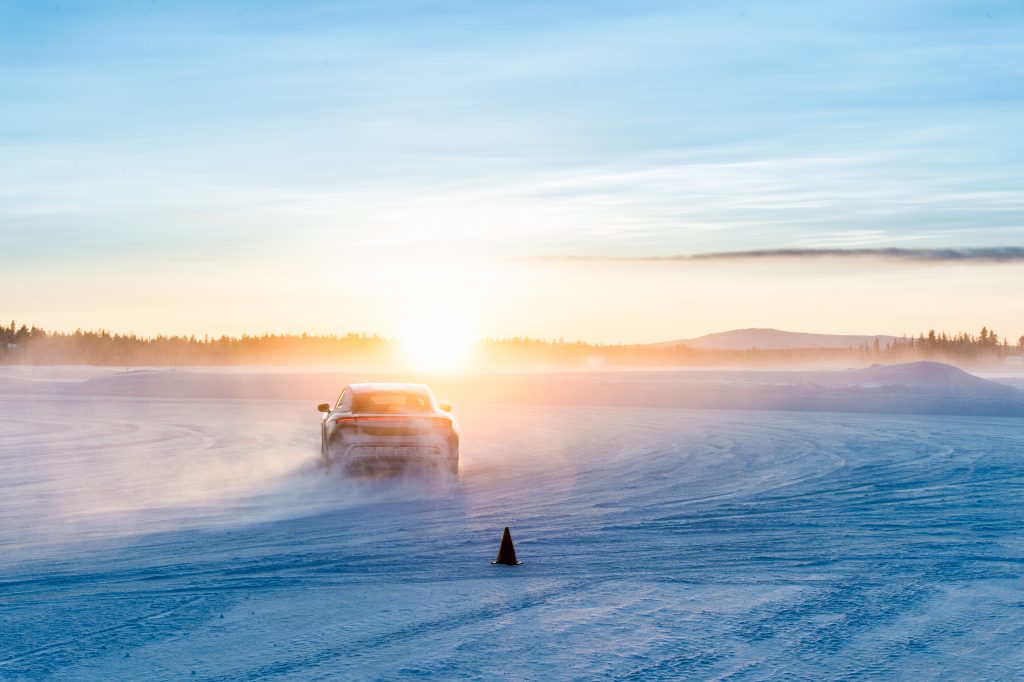
There’s no question that the EV is big and relatively heavy (a 5,121 pound curb weight), a far cry from the other Porsches we’ve been driving, which are quick to recover from slides. Helping things along are features like four-wheel steering and torque vectoring.
Unlike many EVs, the Taycan cannot be driven as a “one pedal” car. Come off the accelerator and the car will coast rather than slowing down abruptly and maximizing energy regeneration. In that sense it feels more like a conventional petrol car, rather than, say, a Tesla Model 3 where you almost never have to brake to slow down.

What isn’t conventional is the engine sound—or lack thereof. You can opt for no piped-in sound, which is pretty neat. We hear the sound of tires on ice and the wind blowing. Or, if you prefer, you can opt for a generated sound that sounds somewhat like a UFO, an electronic hum that increases in volume as you speed up.
We’ve pretty much got the handle on getting the car sideways, and then recovering, but we’re still awfully curious about all that torque. So as we pull up to the starting gate, the Porsche instructor gives us a mischievous look. “Okay, this one time,” he says, “go ahead and punch it.”
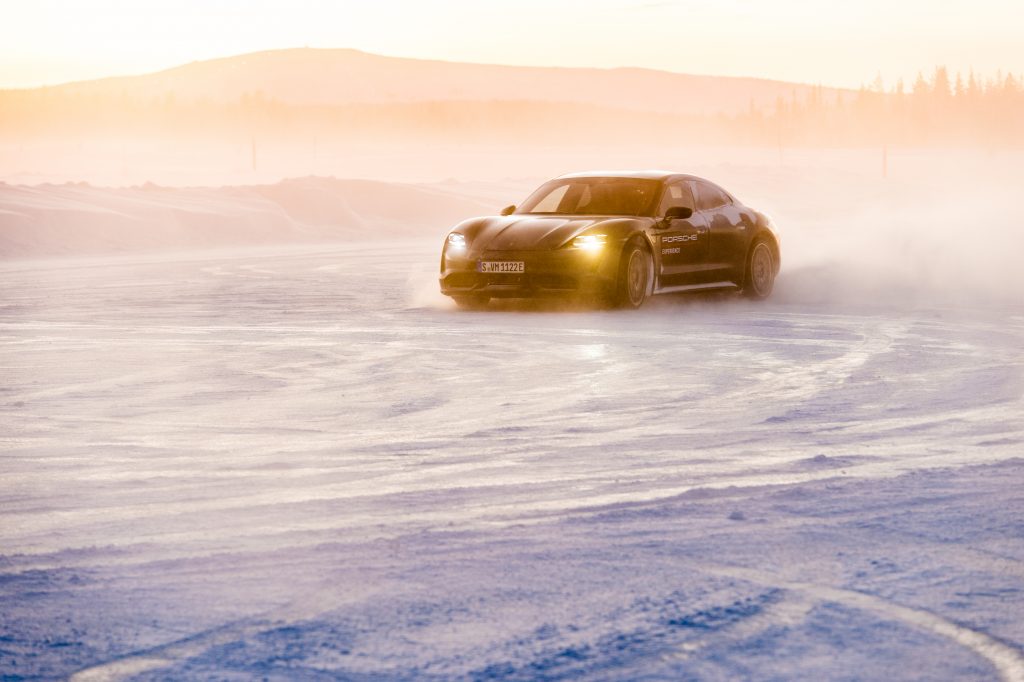
Of course we do. The unmistakable whine of spinning rear tires; the car wiggles as the tires grind off a layer of ice and then hook up, and the Taycan bounds forward. We look into the rear view mirror to see a huge cloud of snow and frost hanging in the air, disturbed by the launch. If the Taycan is this much fun on ice, we’re very much looking forward to getting it out onto dry tarmac.
Images courtesy of Porsche

